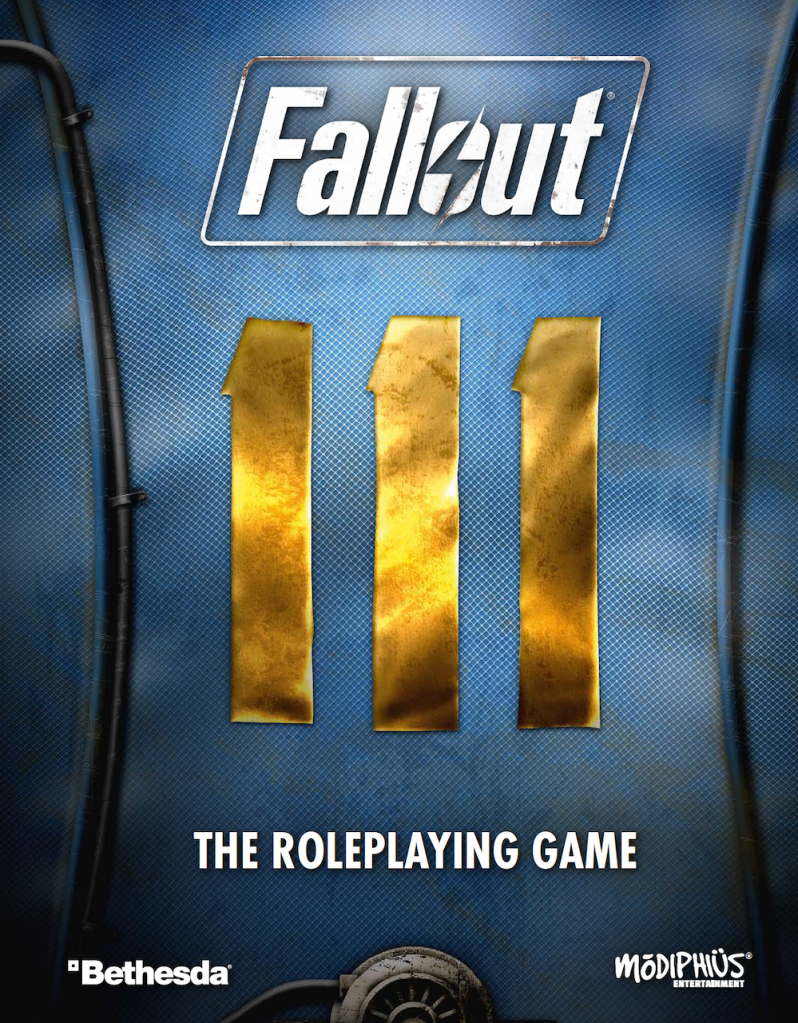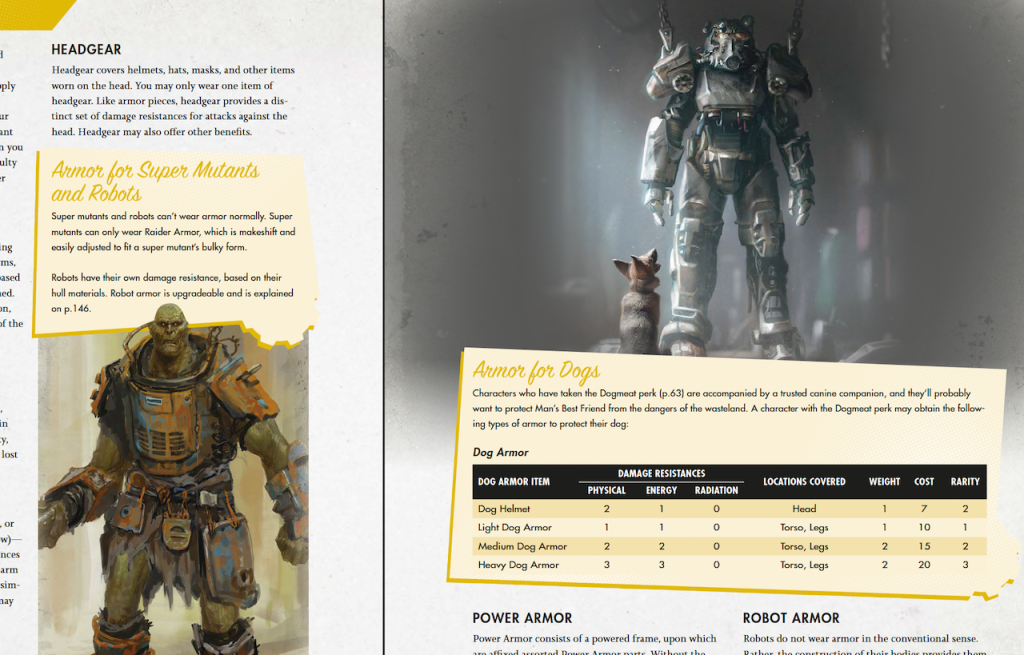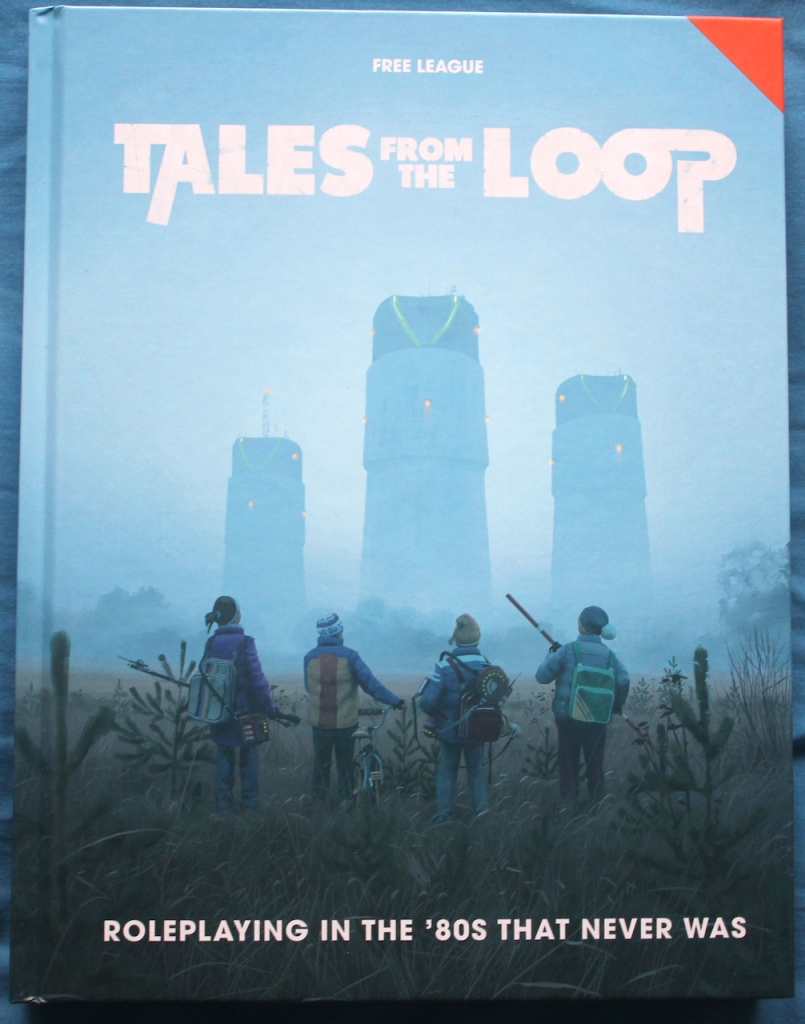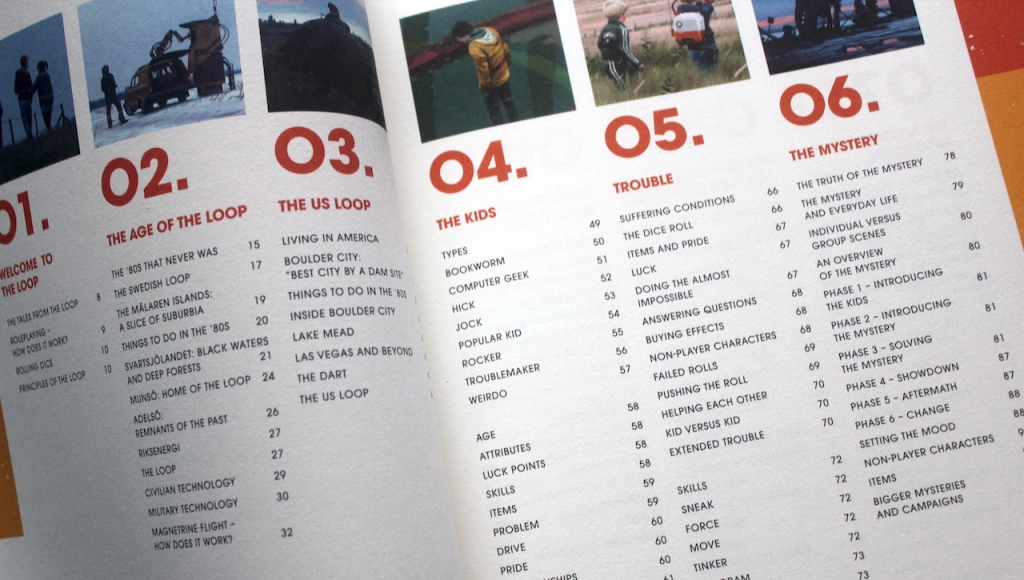And it’s time to crawl out through the fallout, under an orange coloured sky for the latest entry in the Pick Up Pile; Fallout the Roleplaying Game, the last of the newer games I got for Christmas. Just in time for the Amazon Prime series to land on April 11th. This game is available in physical form from most game stores, or direct from Modiphius themselves HERE. Alternatively PDF copies can be obtained from Drive Thru RPG HERE, or Modiphius HERE. Also I must mention that when you buy a physical copy of the game, from any retailer, Modiphius can be contacted for a free PDF as per the instructions HERE.

First up, as I usually do in these reviews is the physical description. A sturdy, 432 page book withe ribbon bookmark (have I mentioned too much how I love ribbon boommarks yet?). Pages are thin to keep the book from being overly bulky, but not fragile and feel like they’ll stand up to regular gaming use. The cover is blue, made to resemble the back of a Vault-Tec jumpsuit, with the number 111 on it, so those familiar with the Fallout videogames will already have an idea of the default setting in the game. The PDF is indexed and has clickable links in the contents page, however page references do not appear to be links. The PDF also came with an Errata document to check your copies are up to date. This was last updated Feb ’23 so any new copies should be updated to have all these corrections already.
So, when you crack open the book, what’s inside? The contents page lists out the Twelve chapters (plus intro). Welcome to the Wasteland, Core Rules, Combat, Character Creation, Equipment, and Survival cover rules thet concern everyone playing the game. Corporations of Pre-War America, Vault-Tec, and The Commonwealth are all setting details, both geographical and historical. Then you have Gamemastering, Denizens of the Wasteland, and With a Bang or a Whimper for the GM’s eyes only. These are followed by the Appendices, where you’ll find the index and the character sheets, which I won’t go in depth on other than to say the sheets are clearly laid out and fit the look of wverything else in the game.
The artwork throughout the book is brilliant, much of it seems to be concept art and illustrations from Bethesda themselves. A lot of it having been used in various Fallout game promotional things over the years. There are atmospheric two page spread before every chapter, and example illustrations everywhere. A fantastic amount of good quality art that breaks up the text nicely.

Welcome to the Wasteland is up first. These four pages give an overview of the game, the default setting (Boston as pre Fallout 4), and what you need to play aside from the book.
Continue reading “The Pick Up Pile. Pondering Fallout The Roleplaying Game”
















